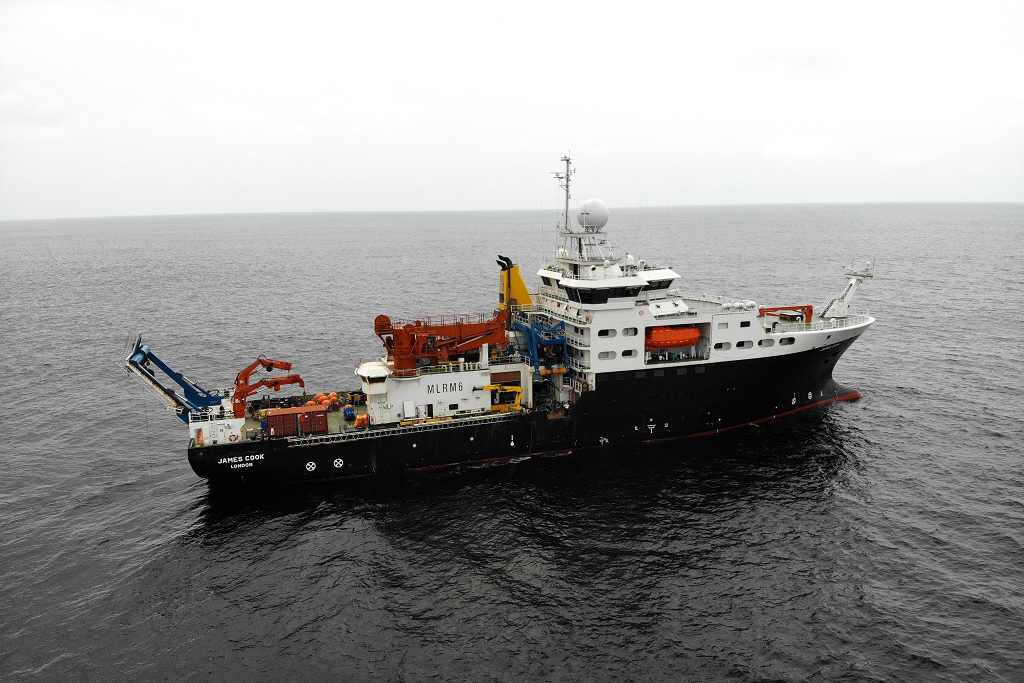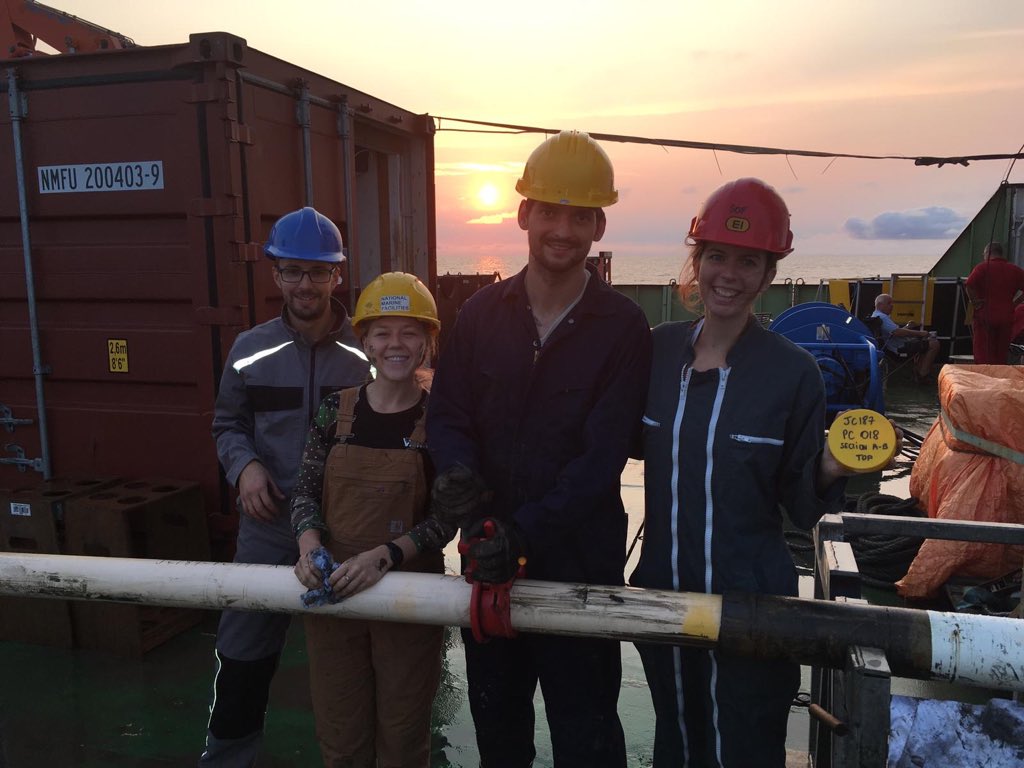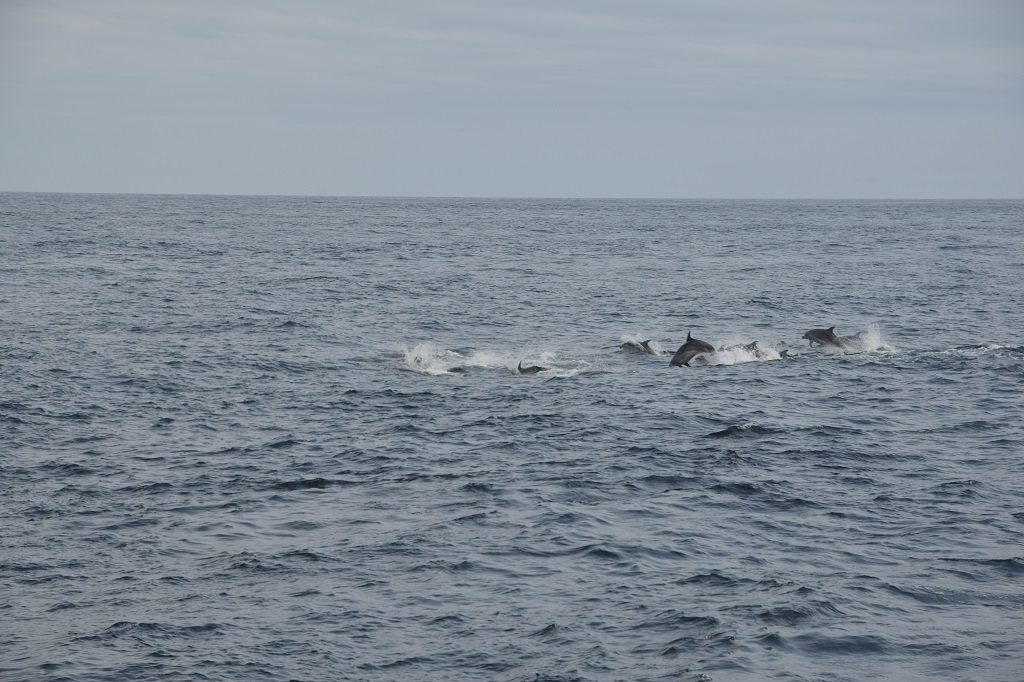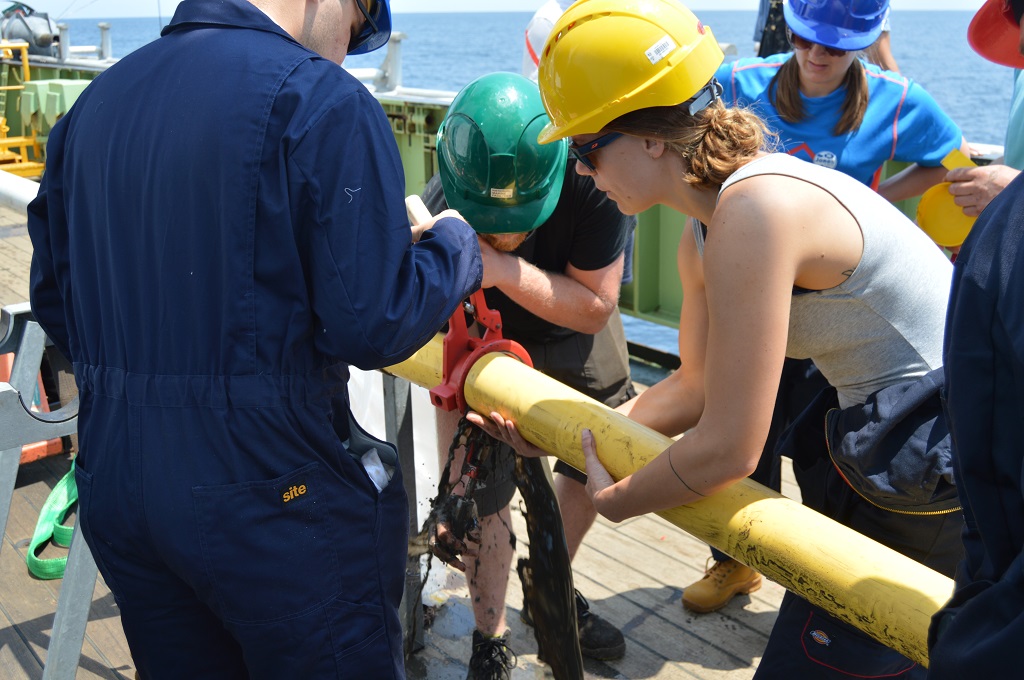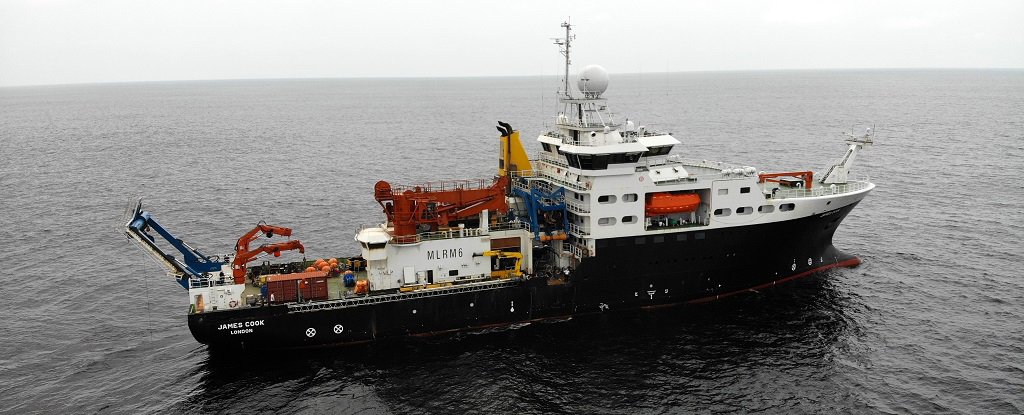
Research Expedition JC187 to the Congo Canyon
Kate Heerema (ESR5) & Maarten Heijnen (ESR10) | @ Research Vessel James Cook (28 August - 8 October 2019)
We, Maarten and Kate, were on a research cruise from August to October. Research cruises are an important part of our submarine sciences, as it is the main way to gather data. As the sub-marine realm remains vastly unexplored, each research cruise brings new and exciting information!
We were part of a larger group of scientists, from various universities and institutes, to gather more information on the Congo Canyon. This is a submarine canyon, directly fed by the Congo River. Previous studies have found that the Congo Canyon is active, and prolonged sediment gravity flows (“turbidity currents”) have been observed in recent times. With this research cruise, we aim to get more detailed information on the Congo Canyon and the current-day activity on the seafloor.
We departed from Cape Verde on the James Cook, a research vessel operated by the Natural Environment Research Council. The research cruise stared with 8 days of transit to the distal end of the Congo Canyon. During this time, we planned a lot of the scientific activities, got familiar with the equipment, and had daily science talks, where we all got the chance to present our ongoing research. With ongoing science for the weeks to follow, we managed to deploy instruments that will (hopefully) measure turbidity currents. The instruments will be recovered next year. We also mapped the seafloor canyon in more detail than ever before. Finally, we managed to get multiple sediment cores, so we can study the material carried by these flows. All of this data combined will give us the most comprehensive dataset thus far on the Congo Canyon.
This research fits well within our PhD projects, both of which revolve around present-day turbidity currents, via active monitoring, high resolution seafloor mapping, and seafloor sampling. Although most data processing and analysis of the Congo Research cruise will not fit in with the limited time left in our PhDs, we did manage to get a better understanding of data collection necessary for current-day turbidity current research.
Finally, during the cruise a Dutch newspaper published an article about the ongoing research on the James Cook. As we are both Dutch, it was an incredible timing to read about our research in a national newspaper whilst out at sea.

